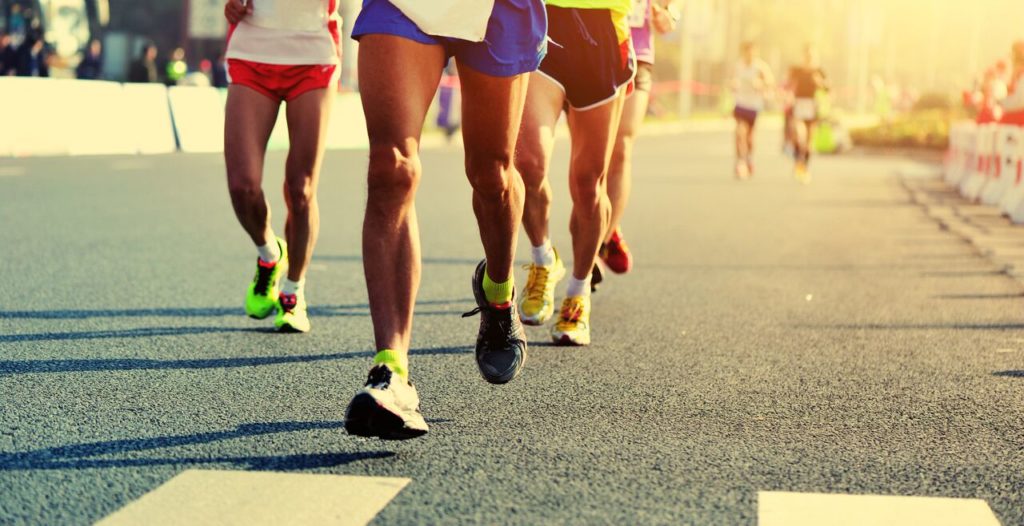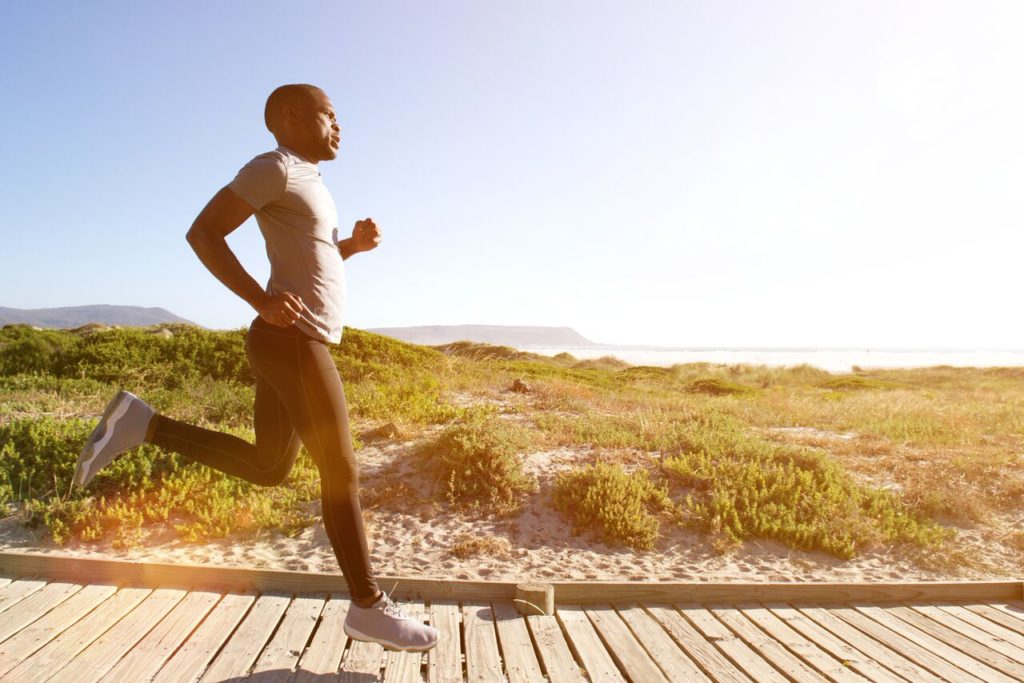On race day, it’s easy to forget the basics. Lose your technique, however, and it could all go wrong. Martin Yelling, endurance coach and ex-international athlete, explains how to keep a strong, balanced and fluid running posture, sure to see you cross the finish line in target time.
Head and neck
Don’t – rock or bob your head backwards and forwards or from side to side. Also, don’t screw your face up or strain your neck.
Do – relax from the eyebrows down. Keep your head level and still, your eyes looking towards the horizon and your neck relaxed.
Shoulders
Don’t – hunch them up when you run, draw them up towards your ears or roll them around.
Do – relax your shoulders and allow them to hang low and loose. Keep them moving freely with the lateral movement of your arms. Drop your shoulders, breath out and roll your shoulders gently if you feel tension rising.
Arms and hands
Don’t – allow your arms to cross in front of your body with each stride, bring them high towards your face, or let your hands flap.
Do – let your arms and legs work together to keep you balanced and moving forwards. An effective arm action also keeps your legs in check. Hold your hands relaxed by your sides. Imagine you’re holding eggshells that you don’t want to break.
Torso
Don’t – slouch, twist, lean or dip. Your torso provides stability and strength to your running posture.
Do – run tall. Extend upwards through your spine as you run. Keep upright with your hips, spine, neck and head in a tower-like line. Allow your chest to expand as you breathe.
Hips
Don’t – let your hips sink or your pelvis drop or tilt. When runners are tired, the first sign of poor form is sinking hips.
Do – keep your hips high and aligned. Pelvic stability is really important for good running form. Your hips and torso form the centre of this. Keep your running centre of gravity high to maintain stride length.

Legs
Don’t – let them flail about, flick out wide, cross over, shuffle or overstride. Avoid really low and really high knee pick ups, or excessive hip flexion.
Do – adapt your stride to different distances. For shorter, faster running, look for a high-knee drive, a powerful leg extension, a long reach down with the leading foot and a fast, clawing action over the ground. For endurance, knee lift isn’t as high or as powerful, but remains linear, with your hips driving your thighs through under the body.
Follow Martin Yelling on Twitter – @myelling








